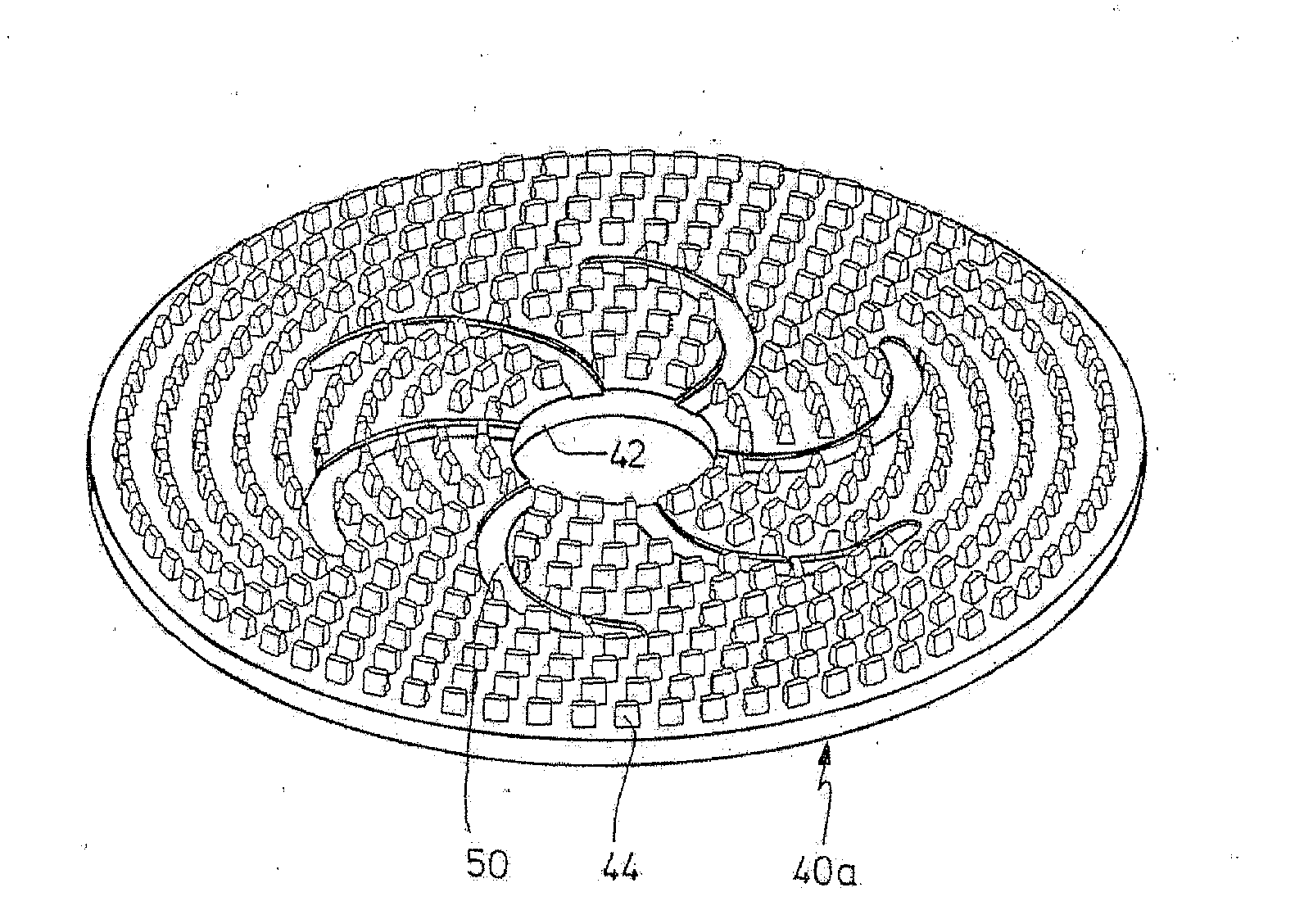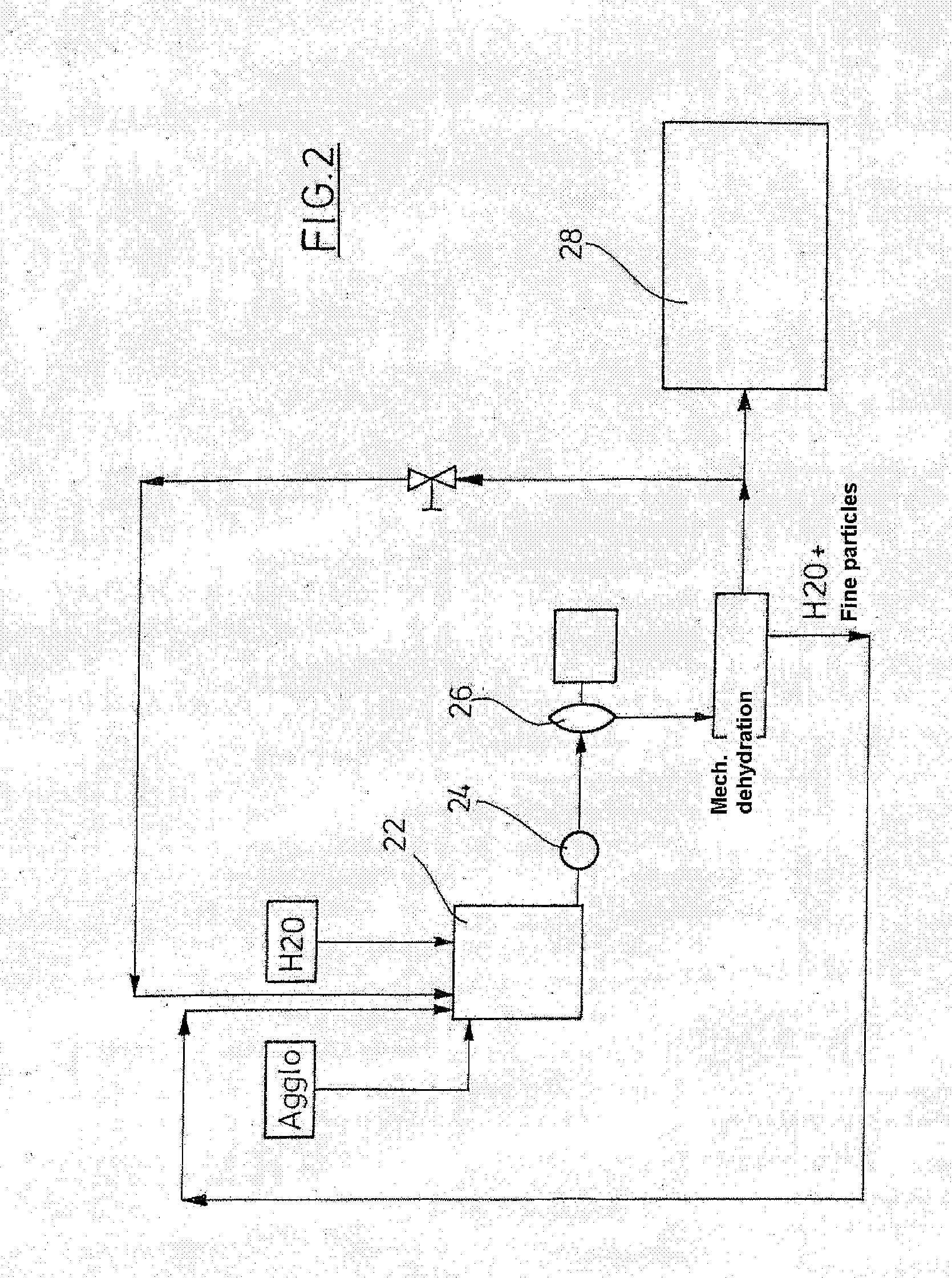Method for recycling all waste plastics in particular mixed plastics
a technology of mixed plastics and waste plastics, which is applied in the field of waste plastic grinding and cleaning, can solve the problems of pelletization, non-melted material getting stuck between the teeth of the refiner and plugging it up
- Summary
- Abstract
- Description
- Claims
- Application Information
AI Technical Summary
Benefits of technology
Problems solved by technology
Method used
Image
Examples
Embodiment Construction
[0032]While this invention may be embodied in many different forms, there are described in detail herein a specific preferred embodiment of the invention. This description is an exemplification of the principles of the invention and is not intended to limit the invention to the particular embodiment illustrated
[0033]FIG. 1 shows a first refiner 10 and a second refiner 12, which are driven respectively by a drive motor 14 or 16a. The refiners 10, 12 are so-called toothed disk refiners, as will be described in greater detail. From a reservoir (not shown), a plastic agglomerate or compactate, previously produced from plastic flakes and similarly sorted plastic waste, which is generally known, is fed to a screw conveyor 16, to which water is also added. The suspension of water and plastic agglomerate or compactate is added to the toothed disk refiner 10. The grainy ground material is dehydrated in a mechanical dehydration, for example using a centrifuge. Process water with small particl...
PUM
| Property | Measurement | Unit |
|---|---|---|
| particle size | aaaaa | aaaaa |
| particle size | aaaaa | aaaaa |
| pressure | aaaaa | aaaaa |
Abstract
Description
Claims
Application Information
 Login to View More
Login to View More - R&D
- Intellectual Property
- Life Sciences
- Materials
- Tech Scout
- Unparalleled Data Quality
- Higher Quality Content
- 60% Fewer Hallucinations
Browse by: Latest US Patents, China's latest patents, Technical Efficacy Thesaurus, Application Domain, Technology Topic, Popular Technical Reports.
© 2025 PatSnap. All rights reserved.Legal|Privacy policy|Modern Slavery Act Transparency Statement|Sitemap|About US| Contact US: help@patsnap.com



